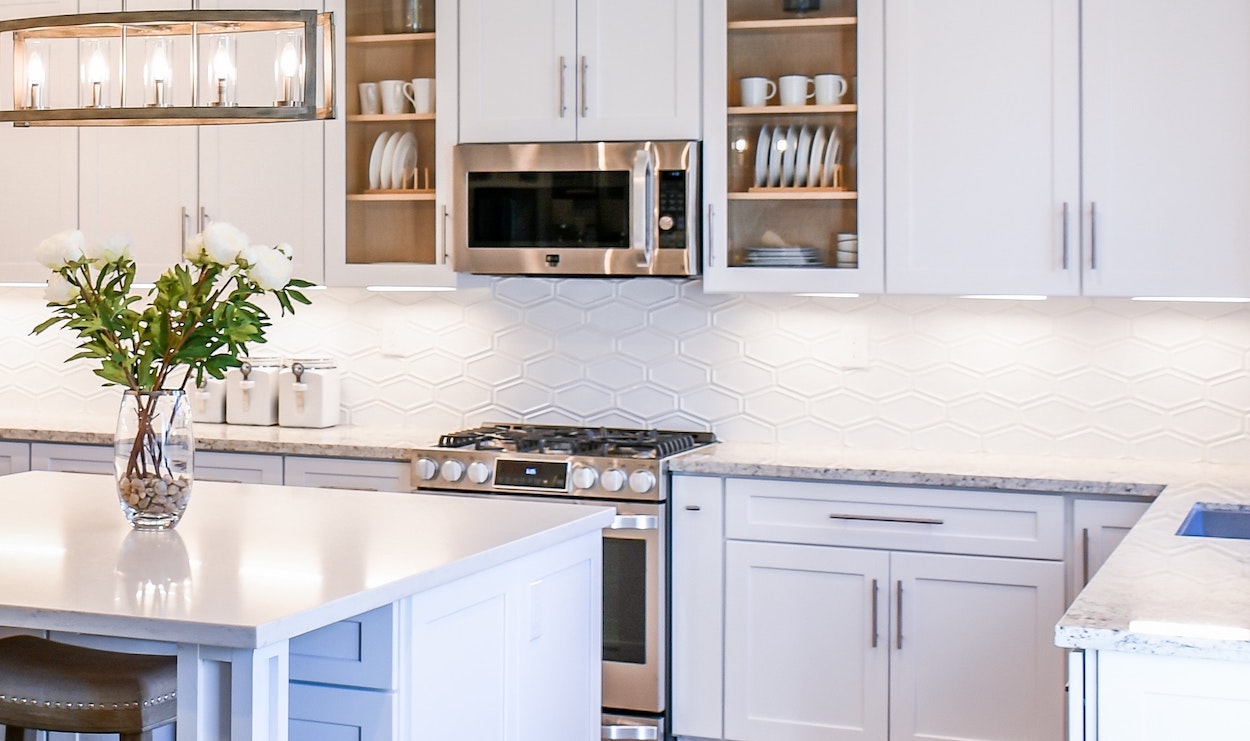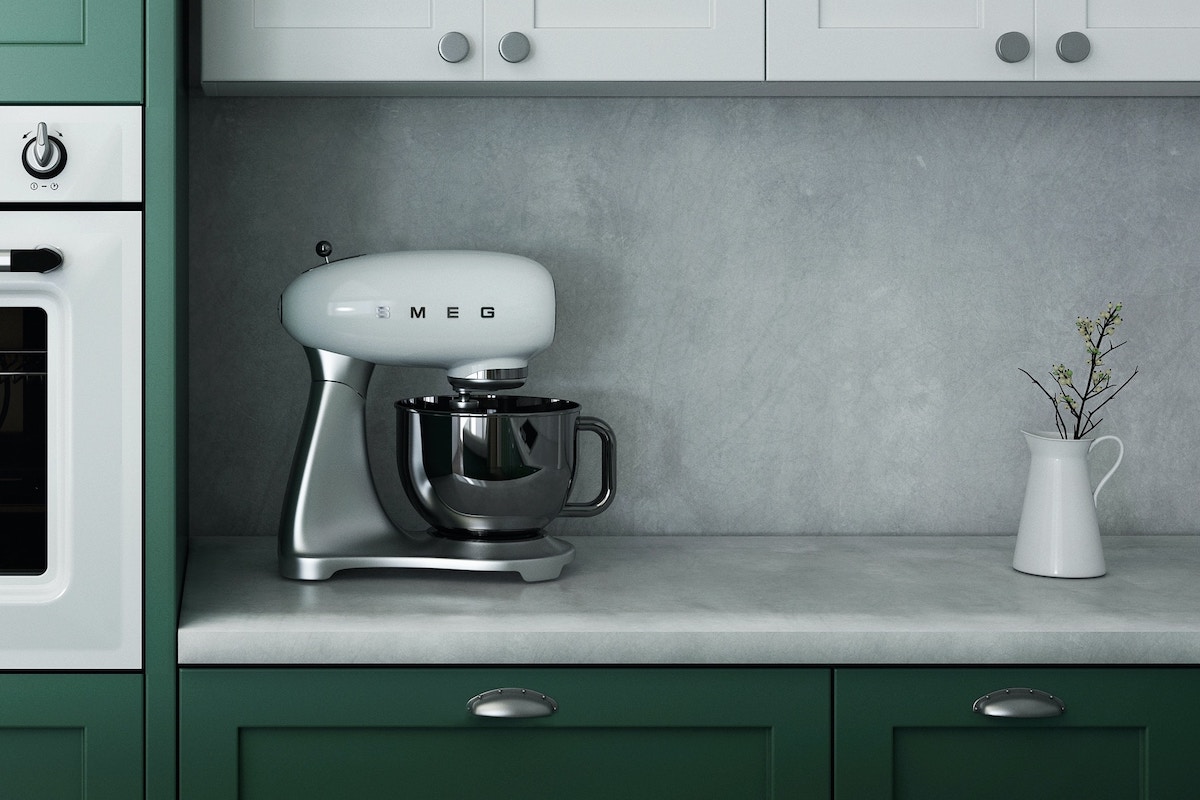What Type of Splashback is Best for a Kitchen?

With a multitude of materials, colours, and designs to choose from, selecting the best splashback for your kitchen can be quite a challenge.
You'll want to strike a perfect balance between functionality, style, and budget.
In this comprehensive guide titled, "What Type Of Splashback Is Best For Kitchen?" we aim to simplify this complex decision for you.
We'll dive into the array of options available, assessing the pros and cons of each, and offer insights into what might work best in different kitchen scenarios.
Whether you're seeking a splashback for a minimalist modern kitchen or a classic country-style space, we've got you covered.
So, get ready to embark on this exciting journey to find the perfect splashback that complements your kitchen's aesthetics while standing up to its demands.
Click here to see our range of aluminium Alusplash splashbacks.
What Type Of Splashback Is Best For Kitchen?
The "best" type of splashback for your kitchen is subjective and will largely depend on your personal preferences, your kitchen's style, your budget, and your cooking habits. Here are a few common types of splashbacks and their respective advantages and disadvantages:
- Glass Splashbacks: Glass is a popular choice for kitchen splashbacks because of its sleek, modern look. It's easy to clean, hygienic, and resistant to heat and moisture. Glass can also be painted on the backside, allowing for a wide variety of colour choices. However, glass splashbacks can be expensive, and they must be tempered (strengthened) for safety. They may also show smudges and streaks more easily than other materials.
- Tile Splashbacks: Tiles offer a lot of design flexibility. They come in a wide variety of colours, shapes, sizes, and materials, so you can create a truly custom look. Tiles are also durable and heat resistant. However, they require grout, which can be difficult to clean and may stain over time. The cost of tile splashbacks can vary widely depending on the tile you choose.
- Stainless Steel Splashbacks: Stainless steel provides a sleek, industrial look that's popular in modern kitchens. It's incredibly durable and easy to clean. However, it can show fingerprints and scratches over time. It's also more susceptible to dents compared to harder materials like stone or tile.
- Stone Splashbacks: Natural stone (like granite or marble) or engineered stone (like quartz) can create a luxurious, high-end look. Stone splashbacks are extremely durable and heat resistant. However, they are more expensive than most other options and require professional installation. Natural stone also requires sealing to prevent stains.
- Acrylic Splashbacks: Acrylic splashbacks offer a similar look to glass at a lower cost. They're lightweight and available in a wide range of colours. However, they are less heat resistant than glass, so they can't be installed directly behind cooktops without a protective shield.
- Laminate Splashbacks: Laminate is a cost-effective option that's available in a wide range of colours and patterns, some of which can mimic the look of more expensive materials like wood or stone. However, laminate isn't as durable or heat resistant as some other options, and it can be susceptible to water damage.
In general, when choosing a splashback, you'll want to consider how the material will fit with your kitchen's design, how easy it is to clean, how well it will hold up under heat and moisture, and of course, its cost.
It may be helpful to view samples in person so you can see how they look and feel before making a decision.
Related Post: How To Remove A Stainless Steel Splashback

Some Advice from an Expert Kitchen Fitter and Manufacturer
As a seasoned kitchen fitter and manufacturer, I've seen the evolution of kitchen splashbacks and worked with an array of materials.
The choice of splashback material is paramount as it plays a dual role - protecting the kitchen walls from splashes and spills while adding to the aesthetic appeal of the kitchen.
Each material has its unique set of benefits and potential downsides.
Glass splashbacks, for instance, offer a sleek, contemporary look and are incredibly easy to clean.
They also allow for a vast range of colour options as they can be back-painted.
However, they can show smudges quite easily and are usually at the higher end of the price scale.
Tiles are a traditional favourite and provide immense flexibility in design due to their variety in colours, shapes, and sizes.
They're durable and heat-resistant but do require a bit more effort to maintain, especially the grouting.
Stainless steel splashbacks give a professional, industrial look that's popular in modern kitchens.
They're highly durable and easy to maintain, but they can show fingerprints and scratches over time.
Stone splashbacks, whether natural or engineered, add a touch of luxury to a kitchen.
They're robust and heat-resistant, but their weight requires professional installation, and they can be one of the most expensive options.
Acrylic splashbacks offer a similar look to glass at a lower cost.
They are available in a range of colours and are lightweight.
However, they are not as heat-resistant as some of the other options, and care must be taken when installing them near a heat source.
Laminate splashbacks are a cost-effective choice and can mimic other materials such as wood or stone.
They are easy to maintain but aren't as heat-resistant or durable as some other options.
Ultimately, the best splashback for a kitchen depends on various factors such as the kitchen's overall design, the homeowner's lifestyle, their budget, and how much maintenance they're willing to undertake.
It's all about finding the right balance between aesthetics, functionality, and cost.
Related Post: What Colour Splashback Goes With A Grey KitchenFinal Notes On What Type of Splashback is Best for Your Kitchen
Choosing the best splashback for your kitchen can be a nuanced task.
It involves juggling a host of factors such as the style of your kitchen, the durability of the material, ease of maintenance, and your budget.
Our comprehensive guide was designed to provide insights into the variety of splashback options available, aiding you in your decision-making process.
As we’ve discussed, splashbacks can range from sleek glass to sturdy stone, versatile tiles, industrial stainless steel, affordable acrylic, and practical laminate.
Each of these materials brings its unique strengths and aesthetic charm to the table, while also presenting certain considerations in terms of cost, heat-resistance, and maintenance.
From the perspective of a seasoned kitchen fitter and manufacturer, the ideal splashback material is one that fulfils your needs in terms of both functionality and design.
Ultimately, the choice is personal and should resonate with your kitchen use, design aspirations, and lifestyle.
Whether you're planning a kitchen renovation or designing a new one, I hope this guide has been valuable in helping you understand the key aspects to consider when choosing the best splashback.


